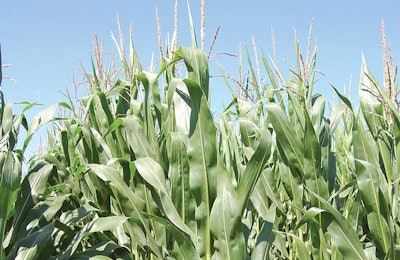
Efforts in recent years to control one voracious pest in a range of crops have been, at least in part, successful. However, losses caused by the fall armyworm continue to mount as its range extends ever further across the globe.
At a recent meeting, the United Nations’ Food and Agriculture Organization (FAO) announced the extension of its program to control the fall armyworm until the end of 2023.
According to FAO Director-General Qu Dongyu, the scope of the program will also be widened.
Just six years ago, this pest was reported in just six African countries. Devouring a range of crops — including staples such as corn, this voracious pest has now been found in 78 nations of Africa, the Near East, Asia and the Pacific.
“Fall armyworm knows no boundaries, and is continuing its rapid march across the globe,” said Qu.
In Africa alone, it causes damage of an estimated value of up to US$9.4 billion each year, he said.
Success achieved by FAO control program
When the potential losses from this pest were realized in 2019, the FAO set up a Global Action for Fall Armyworm Control.
Across Africa, the Near East and Asia, this involved a coordinated approach to control on a global, national, regional and local level. Across eight zones, an integrated pest management (IPM) approach has been largely successful, FAO reports. Furthermore, corn varieties resistant to attack by the pest are now available and undergoing tests in Africa. Finally, more than 140,000 farmers, outreach workers and other professionals have benefited from training on control methods.
In Burkina Faso, the program has achieved marked success.
For the past two years, crop losses from this pest in the West African state have been kept below 5%. At least in part, this is attributed to the introduction of biological controls, which have shown around 90% efficacy in the field.
FAO program extended until 2023
While welcoming the successes, FAO reports that further challenges remain to bring the fall armyworm under control. These underpin the recent decision by the organization to extend the project to the end of next year, 2023.
Among the strategies is the wider employment of technologies for IPM, and the inclusion of more pest threats.
Meanwhile, alternative control measures to insecticides will be investigated. While widely effective, FAO reports that the widespread use of these chemicals against the fall armyworm present a risk to human health and adverse environmental impacts.
Fall armyworm: ongoing threat in East Africa
Local media are reporting the recent return of the armyworm to Kenya. Its arrival is adding to the challenges of the nation’s farmers, reported The Standard this week. The country has recently experienced a prolonged drought. In the face of global food insecurity and rising input costs, the op-ed piece called for the government to prioritize control of this pest.
Meanwhile, in Uganda, the fall armyworm is also adding to the threat of future food shortages.
Since it arrived the state at the end of March, the pest has devastated crops, reports The East African. Affected have been the nation’s staple crop, corn, as well as millet, rice, and sorghum. Losses have occurred a broad swathe of the country. These range from the capital, Kampala, across central Uganda, and towards the eastern regions that border Kenya.
Pest threat widespread
Repeated invasions by the fall armyworm have been blamed for a drastic reduction in the area cultivated with corn in one part of southern India. However, a new project began last month in one district of Tamil Nadu state, according to New Indian Express.
A cooperative venture, the project aims to monitor and manage the pest better. In two farm trials, traps that attract the adult moths were successfully monitored remotely from a mobile phone. This result is expected to facilitate more targeted control measures that are applied on a field-by-field basis.
Even in New Zealand, evidence of the fall armyworm has recently been found.
At the end of March, New Zealand Herald reported some eggs of this pest had been found on the North Island. A recent risk assessment led the authorities to conclude that the adult moth could be carried to the country from Australia on wind. However, the climate and vegetation of New Zealand make it unlikely that the pest will establish in the country.
More on the fall armyworm
In 2018, the government of Belgium pledged financial support for the FAO to control the fall armyworm in Africa.
Native to tropical and subtropical areas of the Americas, the fall armyworm (Spodoptera frugiperda) was first detected in Africa in 2016, and has since spread rapidly from Nigeria across almost all of sub-Saharan Africa, according to the FAO.
Particularly attracted to corn, the fall armyworm also feeds on a wide range of other plants, including rice, sorghum, millet, sugarcane, cotton and vegetables. It is the larval stage that can cause significant damage to these crops. Control of the pest is challenging. An adult female moth lays up to 1,000 eggs in her life, and can fly up to 100 km in one night.

















